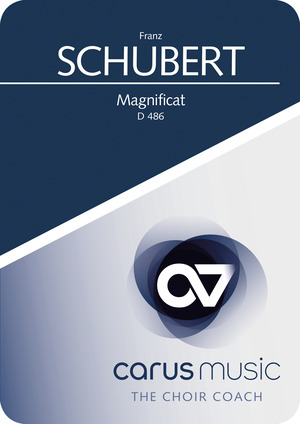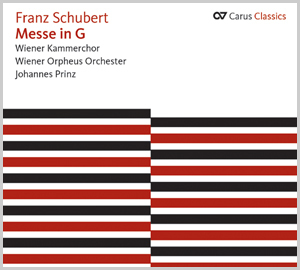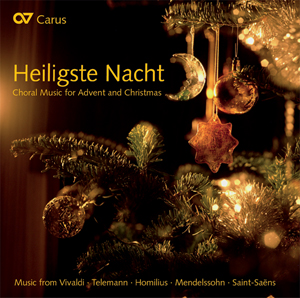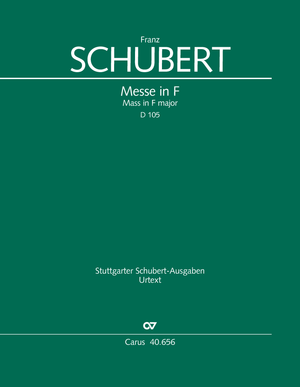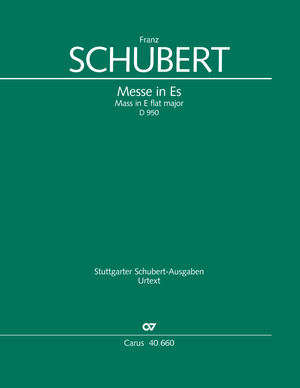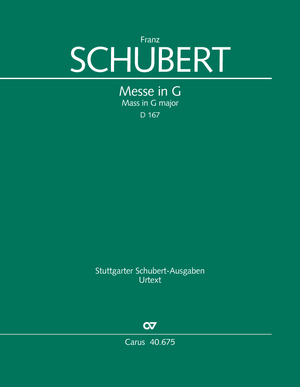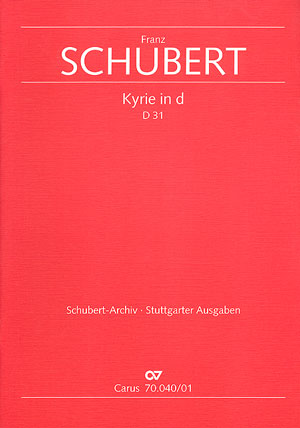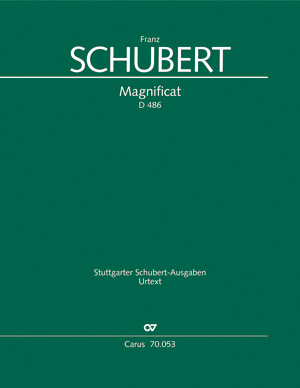
For the Carus edition Schubert’s own autograph manuscript of his Magnificat was consulted again for the first time since 1888. Until 1989 this had been thought to be lost.
Contents
-
Composer
Franz Schubert
| 1797-1828Throughout most of his life Franz Schubert was concerned with church music. When he was eleven he was chosen as treble soloist at his local church in the Vienna suburb of Lichtenthal and soon afterwards he was admitted to the choir of the Imperial Court Chapel, directed by Antonio Salieri. Soon he also began to compose; his earliest surviving sacred pieces date from 1812. During his lifetime his church music achieved a comparatively wide degree of acceptance but after his death, most notably, his smaller works were unjustly forgotten. The Carus programme encompasses Schubert’s complete sacred compositions and it is intended to emphasize the wide range of his works in this area. Many of the smaller liturgical compositions are published here for the first time in separate editions. What is to be discovered is a fascinating œuvre, rooted in the ‘stile antico’ of Antonio Salieri and in the compositions of the Viennese classical masters, but whose exquisite lyricism and harmonic subtlety reveal a typically Schubertian world of expression: works with great power of conviction and exceptional musical beauty. Personal details
-
Editor
Salome Reiser
| 1965-2014
Reviews
Schubert/ Magnificat
Schubert: Magnificat
Eine wunderbare Komposition, welche es wert wäre, öfter aufgeführt zu werden. Das neunminütige Werk, ist in drei Teilen konzipiert, deren beiden äußere aufeinander Bezug nehmen und einen lyrischen solistischen Mittelteil umrahmen. Der Solosopran wird hier bis zum b” geführt.
Die Orchesterbesetzung mit Streichern, Oboen, Fagotten, Trompeten, Pauken und Orgel entspricht in etwa dem der zeitgenössischen „Missa solemnis” und ist somit für festliche Anlässe besonders geeignet. Schubert hat die Verse 49 und 50 des Lukas-Evangeliums ausgelassen und weicht im Ersten Teil von der Textvorlage ab, indem er den Anfangsvers wiederholt und somit die musikalische Struktur gegenüber dem Text dominieren lässt. Die Tatsache, dass an den Chor keine großen Anforderungen gestellt werden, sollte helfen, dass das Werk in dieser hervorragend gemachten Ausgabe eine große Verbreitung findet.
Quelle: Musica Sacra 4/1998, S. 407
Frequent questions about this work
 There are no questions and answers available so far or you were unable to find an answer to your specific question about this work? Then click here and send your specific questions to our Customer Services!
There are no questions and answers available so far or you were unable to find an answer to your specific question about this work? Then click here and send your specific questions to our Customer Services!


